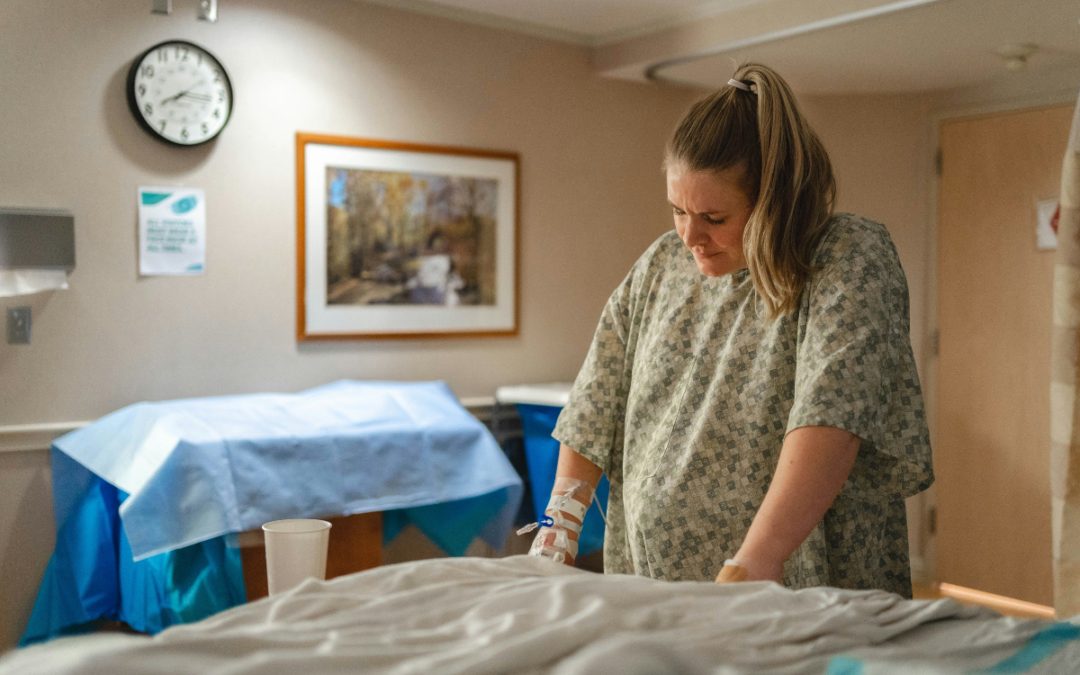
A Washington-area man seeks to end veteran suicides one breath at a time.
WASHINGTON, D.C. – Robert Beckman is a man of many titles. For starters, he’s a veteran. He served as a pilot in the United States Air Force from 1970 to 1975, during the Vietnam War era.
In his lifetime, he’s been a college football star, a PhD, a nuclear non-proliferation specialist and an executive in the intelligence community. However, it’s his current volunteer job that Beckman is most proud of.
He serves as executive director at the TreatNOW Coalition, where he leads a group of people passionate about a common cause.
“We’re not a formal organization. We’re volunteers. Everybody works pro bono,” Beckman said. “And we’re primarily veterans trying to stop suicide among service members – and in the process, change medicine.”
The Military Years
Beckman started his path to adulthood on a football scholarship. However, when Uncle Sam came knocking, ROTC member Beckman answered the call to join the military.
Military service wasn’t originally part of Beckman’s life plan, but his father built airplanes for 44 years. Loving “the flying part of things,” the football player had a pretty easy transition into the air force.
The experience wasn’t exactly what the veteran expected. Calling himself “very politically active” and coming from a “blue collar democrat leaning,” Beckman expressed that his idea of politics at the time was that the whole world needed democracy.
“For better, for worse, I was of a generation that’s hard to understand these days if all you’ve swallowed is U.S. intervention in Iraq and Iran and so on,” Beckman said. “So a steady diet of ‘America should get out of foreign countries’ is sort of the opposite of the world I grew up in, where NATO and the Marshall Plan and the Peace Corps and whatnot were forces for good. I went to Vietnam with absolute certainty about what I was doing.”
Beckman and his comrades didn’t serve solid time in Vietnam. They would go overseas for a few months and then leave. It was a rinse and repeat pattern for four years.
“During the course of that period, you know, America was in flames. The world was in flames and so on and so forth,” Beckman said. “Vietnam went in the toilet.”
By 1974, Beckman and other troops were in the process of extracting from Vietnam.
“So we’re not dissimilar from what the military these days feels about walking away from Afghanistan,” Beckman said.
That’s not the only similarity between servicemen and women. Veterans – whether from Vietnam, Afghanistan, Iraq or other conflicts – commit suicide at alarming rates.
RELATED: New Data Highlights COVID-Created Problems for Veterans
A Heart to Help
When Beckman returned to college, it wasn’t solely to finish his education.
“When I did the PhD, it was to understand why I was in Vietnam. I wound up writing about nuclear nonproliferation and how we spread nuclear weapons all over the world. We called them peaceful nuclear reactors, but they were, well, they’re the breeding ground for uranium and plutonium that become weapons,” Beckman said. “So it’s a double edged sword. Let’s put it that way. Whether you’re a soldier or working nonproliferation or in the Peace Corps, it’s a balancing act that only diplomacy and constant vigilance will transform into goodness.”
His experience and degree eventually placed Beckman in the Washington, D.C. area, where he served in a black Intelligence program. That’s where he heard about treatment – or arguably the lack thereof – given to brain-injured veterans at an area hospital.
As Beckman learned more about the issue, resources found him instead of the other way around. Doctors and other contacts mentioned hyperbaric oxygen therapy (HBOT) to Beckman. Familiar with the treatment’s uses as a pilot and scuba diver, Beckman learned that HBOT also had another potential use – treating traumatic brain injuries.
The veteran met with a group of people passionate about the discovery. Together, they decided to enact change.
Need for Treatment
The issues Beckman hopes to treat often start long before post traumatic stress disorder (PTSD), a leading cause of veteran suicides, comes into play.
Combat-related brain issues first came to light over 155 years ago. During the American Civil War, doctors diagnosed the condition as soldier’s heart. Following World War I, soldiers had shell shock. In World War II, troops developed war neurosis. It wasn’t until 1980 that the American Psychiatric Association recognized PTSD.
“Now you can understand [the military’s] position,” Beckman said. “If you tell every soldier going into battle, they’re going to get brain damage if they get near an IED, you’re going to have a problem on your hands.”
The veteran didn’t look at brain damage as a possibility in the military, but rather as a near certainty.
“Anybody who’s been in combat, in all likelihood, has TBI, traumatic brain injury. It just is a fact of war that whether you’re in training or even before you go in the military – when you’re guys like me, you bang yourself up: diving and rugby and football and horseback riding and skiing and soccer and all of these encounters with immovable objects,” Beckman said. “So you smack your head around and then you go into the military and you’re in training and you get smacked around on obstacle courses and fist fighting because that’s what you do in hand to hand combat.”
Veteran Finds a Solution
The military developed an Automated Neuropsychological Assessment Metrics tool, a symptom-based test that detects brain injuries. Unfortunately, it doesn’t catch every problem.
“You can’t scan the brain and see a concussion,” Beckman said. “You get functional outputs.”
Over time, multiple brain injuries resulting in concussions create an issue called a concussion cascade.
“That concussion cascade is not a good thing. It’s a bad thing. Your brain cells are stunned and are dying. And in the process, inflammation cuts down on blood flow, cuts down on the delivery of oxygen,” Beckman said. “And that’s the key word in all of this, oxygen. The brain absolutely can’t function without oxygen.”
At TreatNOW, Beckman and volunteers promote the use of HBOT for everything from sports to combat-related traumatic brain injuries.
Additional historical uses include treating the flu, decompression sickness, carbon monoxide poisoning, crush injuries, diabetes wounds and a cavalcade of other ailments.
How It Works
“This is a fact. It is a biologic fact of physiologic reality: when you starve the brain of oxygen, body processes, including mental processes, shut down,” Beckman said.
When a person performs a dive into a hyperbaric oxygen chamber, they breathe in pure oxygen at air pressure levels one and a half to three times higher than average. The blood fills with oxygen in an attempt to heal wounds and restore the body to its normal functions.
Johns Hopkins Medicine noted four ways that HBOT works. First, HBOT helps wound healing by bringing oxygen-rich plasma to tissue starved for oxygen. Second, it prevents reperfusion injury. That’s severe tissue damage that occurs when the blood supply returns to tissues deprived of oxygen. Third, HBOT helps block the action of harmful bacteria and strengthens the body’s immune system. Fourth, the therapy encourages the formation of new collagen and skin cells.
While studying the various uses for HBOT, Beckman pondered a simple question: “So why don’t we heal the brain?”
The basic science behind the idea seemed rather clear to him.
“You cannot heal a wound without oxygen,” Beckman said. “It does not work.”
The Challenge Ahead
One of the largest issues, Beckman noted, has been getting the right professionals on board. Even talking with students fresh out of medical school, the TreatNOW executive director experienced difficultly having in-depth conversations about his research, findings and hunches.
“They talk about oxygen and the role of oxygen, but hyperbaric oxygen, it’s just not done. And I’m not trying to say categorically it’s never talked about – only that if you don’t emphasize it and don’t test on it and you don’t study it, it’s not going to jump to mind,” Beckman said. “When you have a brain wound, they don’t even talk about brain wounds. They don’t talk about a brain injury as being a wound that is susceptible to the principles of wound healing. It’s not done.”
Beckman suggested thinking about the brain as what it is – an organ – and providing treatment accordingly.
“If you look at wound healing clinics and how they heal wounds, and the principles on wound healing, you’re studying what should be done in the brain because the brain is an organ,” Beckman said. “The brain has a wound, even though you can’t see it – you know, they say ‘invisible wound’ – but that’s the last time people talk about ‘wound’ in the context of brain injury. They say invisible wound, but they don’t use wound healing principles.”
A Natural Remedy
“Not one intervention for traumatic brain injury is approved by the FDA for traumatic brain injury. Not one, not one – not a drug, not a device, not a process, not one. They are approved for symptomatology,” Beckman aid. “So you can get a drug for depression. [You say] I got a brain injury. You get hit with a ‘You didn’t get hit that hard, but you’re depressed. Here. Here’s a pill for depression.’ That’s approved. ‘Oh, and I got a pill for headache. Oh, let’s get that in you.’ Oh, I can’t sleep. ‘Let’s get a pill in you.’”
HBOT chambers offer a different alternative.
When treating a dementia patient, a sports star with a concussion or a soldier struggling with PTSD, the idea for HBOT in brain injury cases remains the same.
“So you go in the chamber and you get more blood flow or oxygen. And by the way, you build new neuronic tissue, you build new blood vessels, you build new neurons in the brain,” Beckman said. “Cells are regenerated, woken up all over. The body starts feeling better, thinking better, moving better.”
A Veteran Looks Ahead
To date, the TreatNOW Coalition, through a collaborative network of over 100 civilian HBOT-capable clinics in 33 states, treated over 7,500 TBI and PTSD veteran and civilian casualties.
In the future, they’re hoping to help even more people. That starts with spreading the word.
“Here’s what we want: our mission is accomplished when anyone who gets a brain injury – concussion, a stroke, a fall, assault, whatever – just like when you break an arm, you go for an x-ray and you get a cast put on your arm. When you get a brain injury, you go into a hyperbaric chamber.”
Amie Knowles reports for Dogwood. You can reach her at [email protected]
Politics

It’s official: Your boss has to give you time off to recover from childbirth or get an abortion
Originally published by The 19th In what could be a groundbreaking shift in American workplaces, most employees across the country will now have...

Trump says he’s pro-worker. His record says otherwise.
During his time on the campaign trail, Donald Trump has sought to refashion his record and image as being a pro-worker candidate—one that wants to...
Local News

Virginia verses: Celebrating 5 poetic icons for National Poetry Month
There’s no shortage of great writers when it comes to our commonwealth. From the haunting verses of Edgar Allan Poe, who found solace in Richmond's...

Join the fun: Recapping Family Literacy Night’s storybook adventures
When’s the last time you read a book aloud with a loved one? If it’s difficult to answer that question, then maybe it’s time to dust off that TBR...





